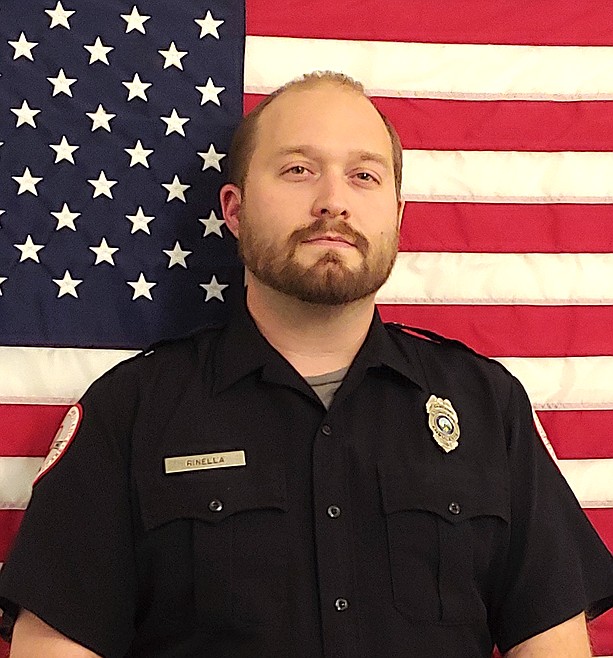Bullets, beans and (especially) Band-Aids
As the usually bountiful supply of toilet paper disappeared from the earth over the past several months, one thing was rendered clear: a previously unprepared population had gained a sudden interest in preparing for challenging times. Here at Boundary Ambulance, many of us embrace the prepared lifestyle, and we enjoy seeing others ready themselves to weather life’s storms, too.
There is a phrase common to discussions surrounding emergency preparedness, which describes three broad categories of items many people choose to purchase for hard times: “bullets, beans, and Band-Aids”. When it comes to those Band-Aids, it’s not always clear what to select, and there is no shortage of misinformation in circulation between multi-level marketing scams and bad reality TV. Here are a few simple items which you may find useful to put up a store of now, in preparation for future emergencies.
A realistic attitude, discernment, and tempered expectations. In one popular preparedness book subtitled “a novel of survival in the coming collapse,” the author described a group of economic disaster survivors performing amateur surgery on a gunshot wound victim at their kitchen table. This is a complete fantasy, which unfortunately many people read as a how-to guide. Serious vetting of available information is vital when making preparedness decisions. It’s not a reasonable expectation, or even an intelligent idea, for laypeople to perform austere thoracic and orthopedic surgery on each other.
Even a simple appearing procedure such as starting an intravenous line can be quite difficult for seasoned health care workers when treating severely ill patients with poor veins. For that reason, we advise focusing on realistic first-aid medical preparations, and leaving the complex invasive procedures to trained professionals.
The best preparation is usually prevention. Tending to chronic illnesses - such as type II diabetes and high blood pressure - by following your doctor’s instructions can reduce your chances of experiencing a medical emergency requiring costly treatment, or potentially unavailable treatment during a serious disaster, or during a backcountry adventure.
A good library, and training. Medical treatment is a complex topic, and our understanding of the human body is constantly changing. First aid and CPR training is advisable to anyone with an interest in preparing for emergencies in good or hard times. Boundary Ambulance routinely provides training in first aid and CPR. Please write to info@boundaryambulance.org for more information about when these classes are held.
Self-study is additionally important. Two great books to start you off are Where There Is No Doctor, and Where There Is No Dentist. These books were written for rural village health care providers, and although it might not be appropriate for readers to perform all of the procedures described therein, the information provided can at the very least help you become a more informed patient.
Rehydration drinks. Dehydration calls are very common for us at the ambulance service, especially in the summer when people are out working in the heat. The effects of dehydration can easily sneak up on a person, including dizziness, headache, muscle cramps and fainting. Additionally, people who are ill often suffer from a poor appetite and poor fluid intake, and are more susceptible to dehydration.
Rehydration drinks and powders are cheap and easy to keep on hand. Because of the high sugar content in common sports drinks, it is advisable to dilute these 50% with water for better therapeutic effect. Where There Is No Doctor contains recipes for rehydration drinks containing sugar, salt, and powdered cereal grains.
Bandaging and splinting supplies. Bandaging and splinting supplies need not be complicated. We keep it simple on our ambulances and stock only the following bandaging items, all of which are available to laypeople on the retail market:
• 2-inch gauze rolls
• 2-inch self-adhesive coban
• 2-inch ace bandages
• 4x4-inch sterile gauze
• 5x9-inch absorbent gauze pads
• 8x10-inch absorbent gauze pads
• Triangular bandages (useful for shoulder injuries)
• Petroleum gauze (which does not adhere to wounds)
• Occlusive dressings for chest injuries
• And, of course, Band-Aids
For simple extremity splinting we use SAM splints, which are made of a long, flexible sheet of metal covered with a protective foam layer that can be molded to an extremity and held in place with bandaging materials. These fantastic splints can be applied very easily to reduce the discomfort of a fractured bone while awaiting definitive medical care.
Bleeding control. Tourniquet use has long been a controversial topic. Current wisdom dictates that early tourniquet use is more beneficial for severe bleeding, and less damaging than previously believed. Commercially produced tourniquets are proven to be more effective than improvised ones, and can be found for $20-30 online. Every first-aid kit should contain at least two of these devices.
Hemostatic gauze is a relatively new item on the market, and can be a great addition to any first-aid kit as well. These gauzes contain chemicals that cause blood to clot when packed into even grievous wounds. At least one hemostatic gauze product available also doubles as a cooling dressing when moistened for burns. Packages of hemostatic gauze can be found online for about the same price as a tourniquet.
This is a starting point and not a comprehensive list. As you research additional items for your first-aid preparations, be ready to winnow the good information from the bad. A simple sniff test is usually sufficient. Dining room table surgery suite? Sniff. No. Essential oils? Sniff sniff … smells nice, but doesn’t smell like emergency medicine. National Geographic’s Doomsday Preppers? Sniiifff …
• • •
Drew Rinella is a paramedic, and the captain of operations for Boundary Ambulance Service in Bonners Ferry.

